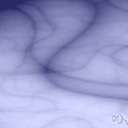an·gi·og·ra·phy
(ăn′jē-ŏg′rə-fē)n.
Radiographic visualization of the blood vessels following the injection of a radiopaque substance.
an′gi·o·graph′ic (-ə-grăf′ĭk) adj.
American Heritage® Dictionary of the English Language, Fifth Edition. Copyright © 2016 by Houghton Mifflin Harcourt Publishing Company. Published by Houghton Mifflin Harcourt Publishing Company. All rights reserved.
angiography
(ˌændʒɪˈɒɡrəfɪ)n
(Medicine) a method of obtaining an X-ray of blood vessels by injecting into them a substance, such as one containing iodine, that shows up as opaque on an X-ray picture
Collins English Dictionary – Complete and Unabridged, 12th Edition 2014 © HarperCollins Publishers 1991, 1994, 1998, 2000, 2003, 2006, 2007, 2009, 2011, 2014
an•gi•og•ra•phy
(ˌæn dʒiˈɒg rə fi)n., pl. -phies.
1. x-ray examination of blood vessels or lymphatics following injection of a radiopaque substance.
an`gi•o•graph′ic (-ˈgræf ɪk) adj.
Random House Kernerman Webster's College Dictionary, © 2010 K Dictionaries Ltd. Copyright 2005, 1997, 1991 by Random House, Inc. All rights reserved.
angiography
the scientific description of blood vessels. — angiographic, angiographical, adj.
See also: Blood and Blood Vessels-Ologies & -Isms. Copyright 2008 The Gale Group, Inc. All rights reserved.
angiography
A diagnostic method of viewing the blood vessels after injecting a substance that is opaque to X-rays.
Dictionary of Unfamiliar Words by Diagram Group Copyright © 2008 by Diagram Visual Information Limited
ThesaurusAntonymsRelated WordsSynonymsLegend:
| Noun | 1. |  angiography - roentgenographic examination of blood vessels after injection of a radiopaque contrast medium; produces an angiogram angiography - roentgenographic examination of blood vessels after injection of a radiopaque contrast medium; produces an angiogramroentgenography, X-ray photography - radiography that uses X-rays to produce a roentgenogram lymphangiography, lymphography - roentgenographic examination of lymph nodes and lymph vessels after injection of a radiopaque contrast medium; produces a lymphangiogram |
Based on WordNet 3.0, Farlex clipart collection. © 2003-2012 Princeton University, Farlex Inc.
Translations
angiografie
angiography
n (Med) → Angiographie f
Collins German Dictionary – Complete and Unabridged 7th Edition 2005. © William Collins Sons & Co. Ltd. 1980 © HarperCollins Publishers 1991, 1997, 1999, 2004, 2005, 2007
an·gi·og·ra·phy
n. angiografía, proceso de obtener una radiografía de los vasos sanguíneos haciendo resaltar su contorno.
English-Spanish Medical Dictionary © Farlex 2012
angiography
n angiografía, arteriografía (técnica); computed tomographic — angiografía por tomografía computarizadaEnglish-Spanish/Spanish-English Medical Dictionary Copyright © 2006 by The McGraw-Hill Companies, Inc. All rights reserved.